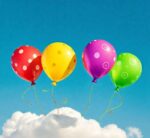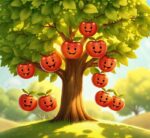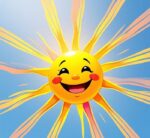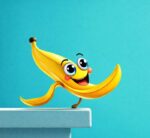- You are here:
- Home »
- words
- » Kindergarten Words That Start With D [LIST]
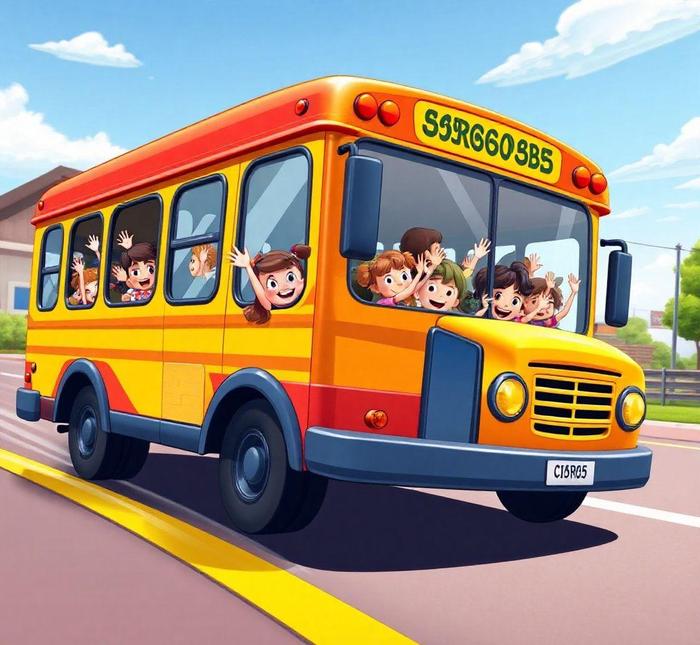
Kindergarten Words That Start With D [LIST]
When teaching young children to read and write, it’s essential to introduce them to words that are easy to recognize and pronounce. One effective way to do this is by focusing on words that start with a specific letter. The letter ‘D’ is a great starting point, as it is both phonetically simple and commonly used in everyday language. From animals and objects to action words and emotions, there are many kindergarten words that begin with ‘D’ that can engage young learners and help build their vocabulary.
This list of kindergarten words that start with ‘D’ not only covers basic nouns, verbs, and adjectives but also incorporates fun and relatable examples that children can connect with. Whether it’s teaching them about “dog”, “doll”, or “dance”, these words form the foundation for more advanced language skills. By familiarizing kids with ‘D’ words early on, educators can encourage a love of learning and create a strong base for future literacy development.
Kindergarten Words That Start With D
1. dog
A dog is a common pet that many people have. Dogs come in different sizes and colors. They are known for being friendly and loyal to their owners.
Examples
- The dog barked loudly at the mailman.
- My dog loves to play fetch in the park.
- We adopted a small dog from the animal shelter.
2. duck
A duck is a bird that has webbed feet, which help it swim in the water. Ducks are often found near ponds, lakes, and rivers.
Examples
- The duck swam in the pond with its baby ducklings.
- We saw a duck waddling near the lake.
- The duck quacked loudly when it saw us.
3. door
A door is a movable barrier that is used to open and close an entrance to a room, building, or vehicle.
Examples
- I knocked on the door and waited for someone to answer.
- The door is open, so we can go inside now.
- Please close the door when you leave the room.
4. doll
A doll is a toy that often looks like a person. Dolls are usually made of soft material and are often dressed in clothes.
Examples
- She loves playing with her dolls every afternoon.
- My grandmother gave me a new doll for my birthday.
- The doll has a pretty dress and long hair.
5. donut
A donut is a round, fried pastry that is often sweet and can be decorated with icing or sprinkles.
Examples
- I had a chocolate donut for breakfast today.
- The donut was sweet and covered in sprinkles.
- Would you like a donut with your coffee?
6. desk
A desk is a piece of furniture with a flat surface where people can write, work, or study.
Examples
- I keep my books and pencils on my desk at school.
- The teacher stood at the front of the class near her desk.
- Please clean your desk before you leave.
7. dinosaur
Dinosaurs are a group of prehistoric animals that lived long ago. Some dinosaurs were huge, while others were small and fast.
Examples
- The T-Rex is a famous dinosaur that lived millions of years ago.
- We saw a big dinosaur skeleton at the museum.
- Dinosaurs come in many shapes and sizes.
8. daddy
Daddy is a word used by children to refer to their father. It is a term of affection and love.
Examples
- Daddy is making breakfast for the family today.
- I love to hug my daddy when I come home from school.
- Daddy helps me with my homework in the evening.
9. dance
To dance is to move your body in rhythm to music. People dance for fun, exercise, or as a form of art.
Examples
- We learned how to dance in our music class.
- She loves to dance to her favorite songs.
- They danced together at the party.
10. deer
A deer is a gentle animal with hooves and antlers. Deer are often found in forests and grassy areas.
Examples
- A deer ran quickly through the forest.
- We saw a group of deer grazing near the woods.
- The deer has a beautiful, brown coat.
11. diamond
A diamond is a very hard, shiny gemstone that is often used in rings, necklaces, and other jewelry.
Examples
- The ring sparkled with a big diamond in the center.
- She wore a necklace with a tiny diamond pendant.
- Diamonds are precious stones that are often used in jewelry.
12. drum
A drum is a musical instrument that you hit with sticks to make a sound. Drums come in different sizes and shapes.
Examples
- He played the drum during the school performance.
- The drummer hit the drum with a pair of sticks.
- The sound of the drum echoed through the room.
13. dream
A dream is a series of thoughts and images you experience while sleeping. Dreams can also refer to something you hope to achieve in the future.
Examples
- I had a strange dream last night about flying.
- My dream is to become a teacher when I grow up.
- She told me about the dream she had about a big adventure.
14. day
A day is a period of 24 hours that begins at midnight and ends at midnight. A day includes both day and night time.
Examples
- Today is a beautiful day to go to the park.
- We have school every day except the weekends.
- My favorite day of the week is Saturday.
15. dirt
Dirt is the loose earth that we find on the ground. It is used in gardening and can get on clothes when playing outside.
Examples
- The garden was full of dirt after I dug a hole.
- I got dirt on my shoes while playing outside.
- The dirt in the sandbox made it fun to build castles.
16. dust
Dust is tiny particles of dirt or other materials that are often seen floating in the air or settling on surfaces.
Examples
- The table was covered in dust, so I had to clean it.
- You could see the dust floating in the sunlight.
- Dust can build up in your room if you don’t clean often.
17. draw
To draw is to make marks on paper with a pencil, pen, or crayon to create pictures or designs.
Examples
- I love to draw pictures of animals in my notebook.
- She used crayons to draw a rainbow on her paper.
- Can you draw a picture of your family?
18. drink
To drink means to take a liquid into your mouth and swallow it. People drink water, juice, milk, and other beverages every day.
Examples
- I need to drink some water after running outside.
- Would you like a drink of juice or milk?
- He drank his cup of tea very slowly.
19. dragon
A dragon is a large, often imaginary creature that can fly and breathe fire. Dragons are popular in stories and folklore.
Examples
- The dragon in the story could breathe fire.
- He drew a picture of a green dragon with wings.
- Dragons are mythical creatures that are often found in fairy tales.
20. dolphin
A dolphin is a sea animal known for being friendly and playful. Dolphins are mammals that live in oceans and seas.
Examples
- The dolphin jumped out of the water and did a flip.
- We saw a dolphin swimming alongside the boat.
- Dolphins are very intelligent and can communicate with each other.
21. dizzy
Feeling dizzy means that you feel lightheaded or like the world is spinning around you. It can happen if you stand up too fast or spin around.
Examples
- I felt dizzy after spinning around in circles.
- He was dizzy from riding the roller coaster.
- When you stand up too quickly, you might feel dizzy.
22. drip
A drip is a small drop of liquid that falls, usually from a faucet or leak.
Examples
- Water began to drip from the leaky faucet.
- I heard the sound of a drip in the kitchen sink.
- The rain started to drip onto the ground.
23. doodle
A doodle is a simple or spontaneous drawing, usually made while a person is distracted or thinking about something else.
Examples
- She liked to doodle in her notebook during class.
- I made a doodle of a cat with funny ears.
- Doodles are simple, quick drawings that people often do when they’re bored.
24. damp
Damp means slightly wet, but not soaked. It’s often used to describe the air or surfaces that feel a little moist.
Examples
- The towel felt damp after I used it to wipe the dishes.
- It was a damp morning, and the grass was wet with dew.
- The basement is a bit damp because it’s near the ground.
25. dime
A dime is a small coin in the U.S. currency system. It is worth ten cents and is one of the smallest coins.
Examples
- I found a dime on the sidewalk this morning.
- A dime is worth ten cents in the United States.
- She gave me a dime for the vending machine.
26. dip
To dip means to put something briefly into a liquid or to lower something down and then lift it out.
Examples
- I like to dip my chips in salsa.
- She dipped her brush into the paint and started to paint.
- I took a quick dip in the pool to cool off.
27. deal
A deal is an agreement between people or groups. It can also mean something that is a good value or offer.
Examples
- They made a deal to trade their toys.
- I have a good deal on these new shoes.
- He promised to deal with the problem after school.
28. dinner
Dinner is the main meal of the day, usually eaten in the evening. It often includes several dishes, like meat, vegetables, and bread.
Examples
- We are having spaghetti for dinner tonight.
- Dinner is ready; come to the table!
- She made a delicious dinner with chicken and vegetables.
29. dusty
Dusty describes something that has dust on it. Objects that have not been cleaned for a while often become dusty.
Examples
- The old book was dusty because it hadn’t been read in years.
- There was a dusty trail leading to the house.
- I cleaned the dusty shelves in the living room.
30. dodge
To dodge means to quickly move out of the way to avoid something, like a ball or obstacle.
Examples
- I had to dodge the ball to avoid being hit.
- She quickly dodged the puddle on the sidewalk.
- The cat dodged the dog and ran away.
Historical Context

The development of language in early childhood is a fascinating journey that reflects not only the cognitive growth of children but also the historical evolution of language itself. When we think about words that children first encounter, we often focus on simple, everyday items and concepts—words that serve as building blocks for language development. The letter "D," in particular, offers a rich selection of words that are accessible, yet deeply embedded in the cultural and historical fabric of society.
Historically, the letter "D" has had various linguistic and symbolic significance across different cultures and eras. For example, in the English language, "D" is one of the oldest letters of the alphabet, tracing its roots back to the Semitic and Phoenician alphabets, where it represented a symbol for "door" or "entrance." This symbolism of "D" as a gateway or a threshold can be poetically linked to the learning process in young children, as they step into the world of words and communication.
In the context of early childhood education, words that start with "D" such as "dog," "duck," "door," and "dress" are often some of the first terms children encounter because they are directly tied to objects, actions, and experiences that are central to a young child’s world. These words have been passed down through generations, each time building on a shared history that transcends individual culture, yet remains universal. For example, the association of "dog" with loyalty and companionship has been embedded in human culture for thousands of years, making it a perfect word for children to encounter early on.
The use of "D" words in early childhood education has a historical precedent in literacy practices. Early educational materials, such as primers and alphabet books from the 19th century, often relied on familiar, tangible objects to introduce children to letters. For many years, educational theorists and teachers have emphasized the importance of using words that resonate with a child’s immediate environment, thus words like "dog" and "doll" became staple examples. These words were not only easy to pronounce but also had strong associations with the physical world around the child, helping to ground their learning in familiar contexts.
Word Origins And Etymology
The origins and etymology of words that begin with the letter "D" are both diverse and intriguing. In the English language, many of these words have roots that trace back to various Indo-European, Latin, and Germanic languages. Understanding the etymology of these words helps to deepen our appreciation for the history and development of language as it is used in early childhood education.
Take the word "dog," for instance. The exact origin of the word "dog" is somewhat mysterious, though it is believed to be derived from the Old English word docga, which referred to a breed of large, powerful dog. Interestingly, the term "hound" was once the more common term for dogs in general, but "dog" gradually overtook it in popular usage over time. The word “dog” underwent various linguistic transformations through Middle English before becoming the standard term we use today. It’s fascinating to consider that the word for such an integral companion in human society has evolved alongside our cultural history and continues to hold such significance.
Other "D" words, like "duck," trace their roots to Old English as well. The word "duck" comes from the Old English ducan, which means "to dive" or "to plunge." This etymological link underscores the bird’s characteristic behavior—diving into water—and highlights how the word itself is tied to the natural world and the behaviors that were most noticeable to early speakers of the language.
"Doll," another commonly encountered word for children, originates from the Middle English term dol, which referred to a toy or small figure. The word dol itself has ties to the Old English docce, which also referred to a small figure or toy, possibly related to the concept of a child’s plaything or representation of human or animal forms. Over time, "doll" became specifically associated with the small, often human-shaped figures children use in imaginative play.
Exploring the etymology of these simple words reveals a fascinating blend of cultural, historical, and linguistic forces that have shaped their meanings and usage over time. The words children learn first are not only markers of their developmental milestones but also echoes of centuries of human experience.
Common Misconceptions
Despite their seemingly simple nature, many "D" words can sometimes lead to misconceptions in both the learning process and general usage. One common misconception revolves around the phonetic pronunciation of "D" words. For example, children may confuse words like "deer" and "dog," particularly when they are first learning to distinguish between similar sounds. The subtle differences in vowel sounds can be confusing, and it may take time for children to fully grasp how letters correspond to particular sounds in different contexts.
Another misconception occurs when children are first introduced to plural forms. Words like "dogs" and "ducks" are often taught early on, but the pluralization rules can trip up young learners, especially when they encounter irregular plural forms. For example, the plural of "child" (children) and "foot" (feet) might create confusion in the classroom when children first begin to expand their vocabulary beyond simple nouns. They might instinctively form plural forms like "deers" or "doggies," not realizing that these terms do not follow standard pluralization patterns in English.
A more conceptual misconception related to "D" words might involve the difference between items that are alive and those that are inanimate. For example, children might initially treat "dog" and "doll" as similar words because both are objects they can interact with, even though one represents a living creature and the other an inanimate object. Teachers often need to clarify the distinction, helping children understand that while both words can be associated with play, they belong to entirely different categories—one representing a living animal and the other a toy.
Additionally, words like "door" and "draw" may seem similar in spelling and pronunciation, leading young children to mix them up or use them interchangeably. While they both start with "D," they represent vastly different concepts—one is a physical object, and the other is an action. Misunderstanding these differences can lead to confusion in both language development and conceptual understanding.
Conclusion
In conclusion, kindergarten words that start with the letter "D" offer a window into both the developmental stages of early childhood language acquisition and the rich historical and linguistic journey of the English language itself. From the ancient roots of words like "dog" and "duck" to the ways in which these terms help shape young minds today, these words serve as foundational building blocks in a child’s growing vocabulary. Understanding their etymology not only provides a greater appreciation of the language’s evolution but also informs how these words should be taught and learned in educational settings.
However, like any aspect of language development, teaching these "D" words is not without its challenges. Common misconceptions about pronunciation, pluralization, and conceptual differentiation are part of the natural learning process and highlight the complexity of language acquisition. As children progress through these early stages, the simple yet rich vocabulary that starts with "D" serves as both a reflection of their cognitive growth and a connection to the deep history of the English language.
By addressing these challenges with patience and clarity, educators and parents can help young learners build a strong, accurate, and nuanced understanding of language, laying the groundwork for lifelong communication skills.


